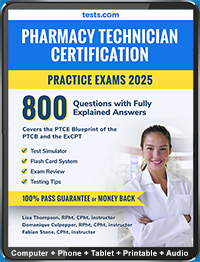FPGEE Guide
| FPGEE Summary
|
|
|---|---|
| What: Foreign Pharmacy Graduate Equivalency Exam | |
| Who: Foreign-educated pharmacists applying for US licensure | |
| Where: Pearson VUE test centers nationwide | |
| When: Two times annually, usually in the spring and fall | |
| How: Computerized | |
| Type: Multiple-choice | |
| Why: The test is required for state licensure. | |
| Time: Five hours and 30 minutes | |
| Language: English | |
| Preparation: A practice test is recommended. | |
| Cost: $800 | |
By: Erin Hasinger, Tests.com
The Foreign Pharmacy Graduate Equivalency Examination, or FPGEE, is a required examination for those seeking licensure as a pharmacist in the United States but have earned a pharmacy degree in another country. The exam is part of the Foreign Pharmacy Graduate Examination Committee (FPGEC) Certification Program; candidates must also pass the TOEFL iBT. Pharmacy graduates of more than 200 countries can participate in the FPGEC program; all states, the District of Columbia, Puerto Rico and Guam all require non-US pharmacy graduates to have FPGEC Certification before they are eligible for pharmacy licensure. (Note that some states will accept graduates of a Canadian pharmacy school without FPGEC certification.)
Those applying for FPGEC Certification must have graduated from either an accredited or recognized pharmacy school in a foreign country, and also must be able to provide documentation of licensure or registration of unrestricted pharmacy practice.
The FPGEE is comprised of 250 questions that are taken from four content areas:
- Clinical sciences (35 percent)
-Pharmacy practice and pharmacist-provided care
-Medication dispensing and distribution systems
-Pharmacotherapy practice guidelines and clinical trials
-Pharmacotherapy – health promotion/disease prevention
-Pharmacotherapy – pharmaceutical care
-Pharmacist-provided care for special populations
-Drug information
-Medication safety
-Literature evaluation and research design
-Literature evaluation and research design
-Patient assessment laboratory
- Pharmaceutical sciences (29 percent)
-Medicinal chemistry
-Pharmacology
-Alternative and complementary treatment
-Toxicology
-Bioanalysis and clinical chemistry
-Pharmaceutics and biopharmaceutics
-Pharmacokinetics and clinical pharmacokinetics
-Pharmacogenomics and genetics
-Extemporaneous compounding
- Basic biomedical sciences (21 percent)
-Anatomy and physiology
-Pathology and pathophysiology
-Microbiology
-Immunology
-Biochemistry and biotechnology
-Molecular biology and genetics
-Biostatistics
- Social, behavioral, administrative pharmacy sciences (15 percent)
-Healthcare delivery systems
-Economics and pharmacoeconomics
-Practice management
-Pharmacoepidemiology
-Pharmacy law and regulatory affairs
-History of pharmacy
-Ethics
-Professional communication
-Social and behavioral aspects of practice
Test takers must score at least 75 or higher on the exam to be granted FPGEC certification. Five hours and 30 minutes are given for the exam; test takers will be required to take a 30-minute break midway through the exam.
The exam is only offered twice each year, usually in the spring and fall, at more than 200 Pearson VUE test sites nationwide. Test candidates should register for the FPGEE online at www.napb.net. Candidates may only register once they have been approved by the FPGEC to take the exam and have received a letter indicating so. The exam fee is included in the FPGEC application fee of $800.
Following online registration, test candidates will receive via email an Authorization to Test from Pearson VUE, which will include instructions on scheduling the exam at a Pearson VUE test site. Once candidates are accepted to take the FPGEE, they may only take the exam on one of the next two consecutive test dates.
Score reports are made available to test takers online at www.napb.net approximately eight weeks after the test. Scores are presented in a scaled format, and a 75 is needed to pass. Candidates who do not pass the exam may retake the test, but must reapply with FPGEC and pay a $600 exam fee. They must also go through another evaluation process.
To help candidates prepare for the exam, National Association of Boards of Pharmacy provides test takers an online practice exam that includes 66 questions similar to those asked on the FPGEE. To find other helpful test preparation materials, please see the FPGEE Test Directory. For information on the TOEFL, see the TOEFL Directory.




